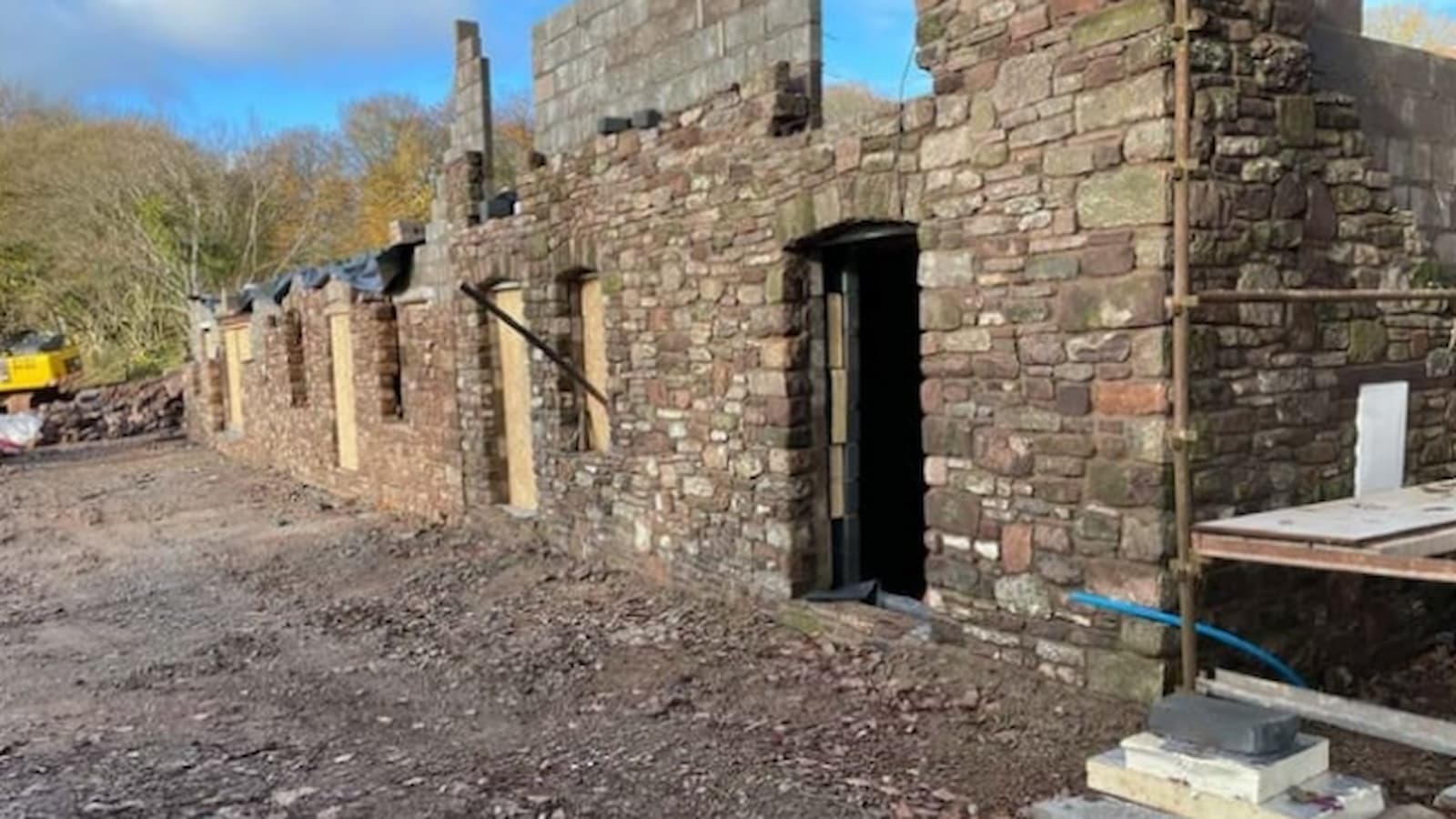A family in Monmouthshire could lose everything after their 200-year-old farmhouse collapsed, leaving them in the middle of a complex legal and planning battle.
Mike Wells and his wife, who invested their life savings to rebuild Bushes Farm, near Shirenewton, now face the possibility of losing their home after Monmouthshire County Council revoked their planning permission.
They have taken their case to an appeal after councillors were split on the decision to not allow them to rebuild the farmhouse and it was alleged the couple had purposely knocked down the building themselves.
The collapse and initial planning approval
The Wells family was granted permission in 2018 to rebuild Bushes Farm, a stone farmhouse dating back to at least 1882. However, during the rebuilding process, the original walls of the farmhouse collapsed.
This triggered a series of legal complications, with the council rejecting two subsequent planning applications related to the rebuild, citing concerns about the structure’s condition.
The collapse has led to a chain of legal issues, including an accusation that the rebuild harmed a bat roost. This case was later dismissed in court, with no evidence found to support the claim.
Rejected applications and the battle for approval
The latest planning application, which sought approval for a “replacement dwelling,” was rejected by Monmouthshire’s planning committee in November 2024.
Despite some councillors expressing support for the project, the committee ultimately voted to refuse the application after a tied vote.
The council’s planning officers argued that the new home, though occupying the same footprint as the former farmhouse, would be considered a new build in the open countryside – an area where new constructions are typically not permitted.
Legal struggles and personal consequences
The couple’s representatives have criticised the council’s decision after it was alleged the building was “willfully demolished”.
Agent Geraint John further explained: “The planning department made the wrong assumption that the building was purposefully and ‘willfully demolished’ and that the planning permission had not been implemented. There’s no evidence to support that claim. They’ve spent £30,000 trying to salvage the building.”
The family’s legal struggles have also included accusations of damaging a bat roost during the rebuilding works. “We were accused of harming a bat roost, but that case was dismissed by the court,” Wells explained. “The court found there was no case to answer, but it has still been a significant stress on us.”
Planning officer Amy Longford confirmed that there was no evidence the building was intentionally demolished, but noted: “Unfortunately, the situation is that the building is no longer standing, the walls and roof have gone.”
The road ahead: Appeal and continued struggles
The family’s legal battle is not over, as they plan to appeal the decision to the Welsh Planning Body, PEDW. Despite support from some councillors, including those who hoped the house could be rebuilt to closely resemble its original form, the family’s future remains uncertain.
Councillor Su McConnell, who voted to reject the application, said: “I’m voting with a heavy heart. I’m hoping against hope that the applicant is successful on appeal. It’s a difficult decision, but one that is guided by planning law.”
Councillor Meirion Howells, who expressed his support for the project, remarked: “The house would look very much like it did 200 years ago. It’s a project that would preserve history, and I believe it should move forward.”
As the Wells family faces the threat of losing everything they have worked for, their case highlights broader issues in rural planning and the challenges of rebuilding heritage properties.


